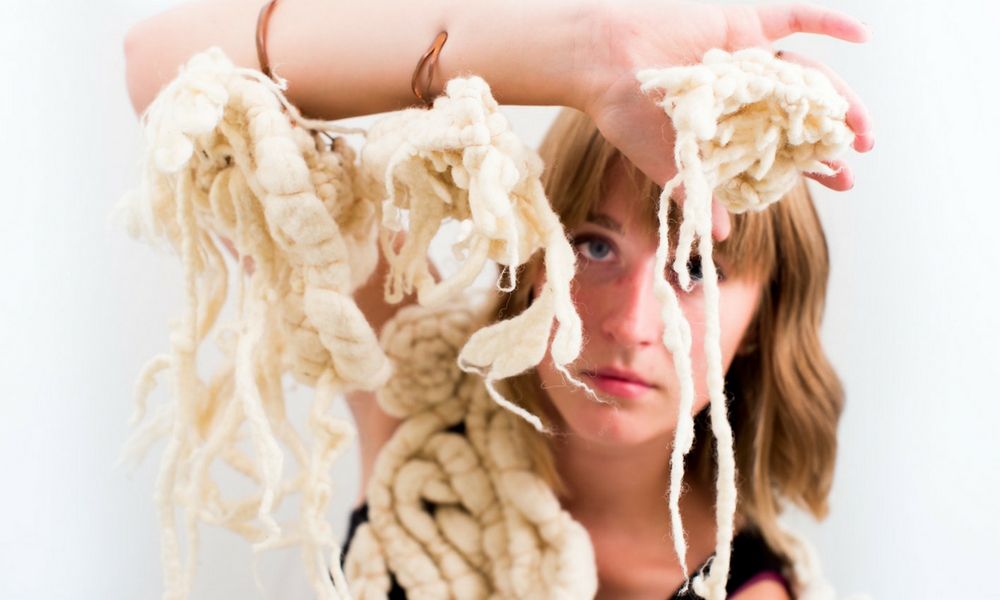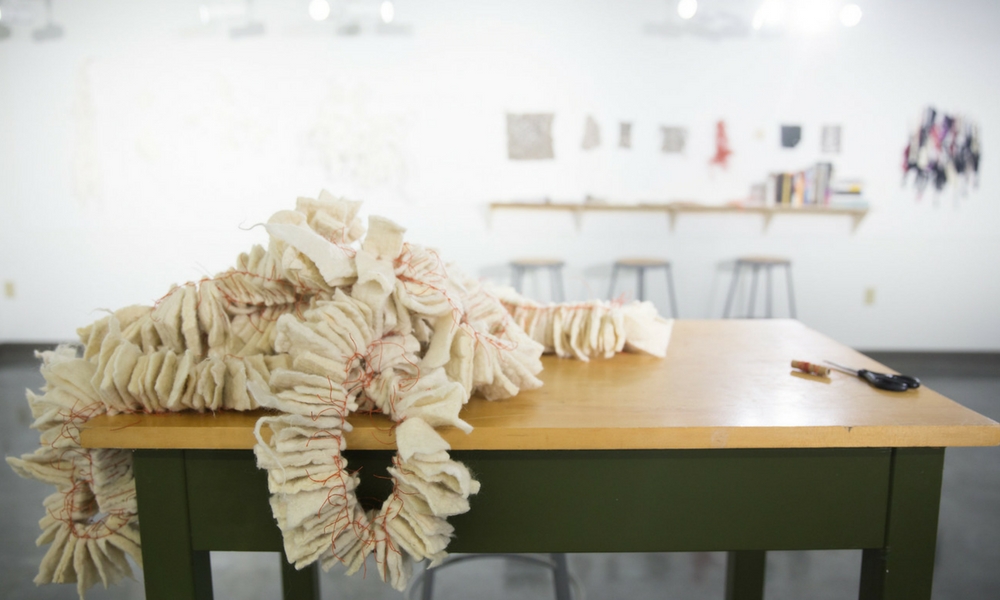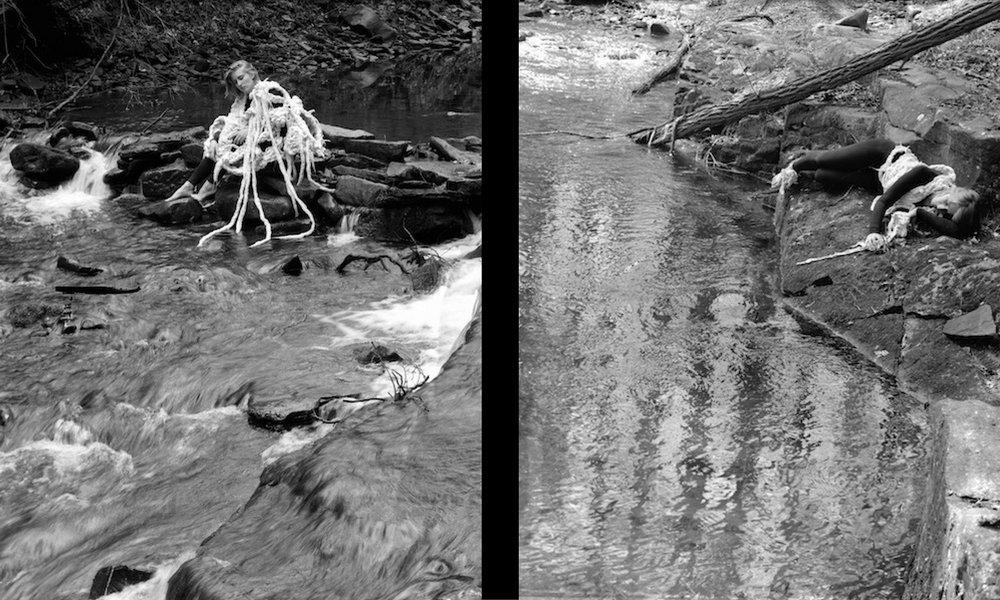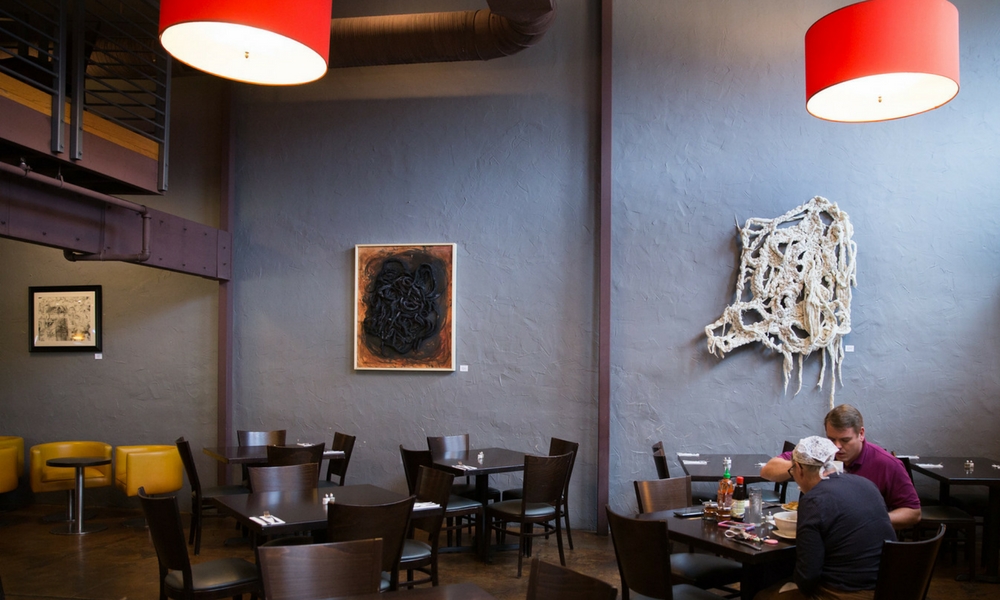Reframing Feminism via the Fiber Arts
an Interview with SADAH student Ashley Roth
School of Art Design and Art History
Tell us about yourself and your work.
I am a mixed media fiber artist from Staunton, Virginia. My work is inspired primarily by the inequality of the sexes and mental disorders. Because of my interests in social change, particularly from the feminist standpoint, my process demands research-based practice as well hands-on experience. I engage with the craft movement and its intersections and association with the history of feminism by working heavily with techniques and materials involving intensive labor such as crocheting and weaving to highlight traditional views on the role of women in society. As of late, my work strives to address rape culture and sexual assault. It is important to me that my work is informative to others about these issues so that we can prevent them from happening, and from becoming more fully socially accepted.
You were the recipient of a 2016 College of Visual and Performing Arts (CVPA) Research Grant. What was your proposal?
My goal was to explore feminism through fiber, a medium that has been historically associated with women and the domestic sphere. I was interested in increasing my knowledge of other artists working with this medium and in researching how they address feminism through their own work. I also wanted to better understand fiber’s relation to the craft movement.
My project would have me collect scholarly research from three major institutions as well as from technique training at a summer workshop hosted by an internationally renowned craft school, and to incorporate my findings into my work on the topic of craft and "women's work". I would then culminate an exhibition of my work that would be designed in a way so as to engage with the community through interaction and discussion about feminism and the craft movement.
What initially attracted you to fibers as a medium?
I took my first fibers class during the spring semester of my sophomore year and fell in love with it. I studied the history of fibers the following summer and really began to understand the relationship between this medium and the complex history of feminism and women’s rights in our society. Through my work with this medium I have also discovered that my personal artistic process is grounded in research, labor, and activism, which are all deeply connected to feminism and fibers.
I am a fiber artist not only because I work in this particular medium. I could be a sculptor or a painter working with fibers. I am a fiber artist because I choose to make work about the associations of this particular medium to women, to feminism, to craft, and to “women’s work.” Fibers Art is more than just a medium, it’s grounded heavily in the history of sexuality and gender.
 |
| Performance area from Ashey Roth's i3D Senior Exhibit, Duke Hall Critique Space, Fall 2016 |
Tell us about your process from conception to conclusion.
Beginning a project usually involves a lot of informal conversations with others on the concepts and ideas, which I often record in my sketchbook. Then I continue to research these concepts through reading and material research. I strive to choose materials and processes that are influenced by the concept of the work. What follows is a whole lot of experimentation and trial-and-error. This often results in a series of pieces creating a body of work. Each body of work leads into the next and they all inform and discover each other.
Who have been your major influences and why?
Jessica Valenti’s book Full Frontal Feminism has had an enormous influence on my work recently. It has completely changed my understanding of what feminism means and why it is so important. I am currently working on a body of work surrounding the misconceptions of rape culture and sexual assault, which I gained knowledge of thanks to Valenti’s book. Janine Antoni is another major influence. Her work is process-oriented, highly complex and incorporates her own body in ways that comment on gender, identity and the body. “Lick and Lather” (1993) and “Slumber” (1993) are two works that particularly spoke to me and influenced me to use my body more in my work and to really explore process and performance. Allison Seay’s To See the Queen captured me right around the time I started writing poetry. I really resonated with her writing and I soon discovered my writing to be an essential part of my artistic practice. Poetry has provided me another layer of complexity and meaning to my work.
Tell us about a piece of your work that you’re particularly proud of and why?
Coping, 2016
These wearable pieces focused on my personal experience with mental disorders, specifically depression, panic disorder, and OCD. I sought to explore the similarities of mental disorders to fungi, parasites, and invasive plant species such as English Ivy and Kudzu for the way that they inhibit a person’s ability to function and their effects on a person’s physical health. The element of repulsiveness being displayed through body adornment expresses my feelings of shame, awkwardness, and vulnerability regarding my illnesses.
As I continued working on this series I furthered my research in fibers and feminism. I realized that this body of work was largely influenced by the stigmas surrounding being a woman and working with a medium that is historically based in craft. It is grounded in feelings of shame, awkwardness and the vulnerability of being a woman. However, after the piece was finished, I realized that it begins to see past to an even deeper issue: it was about the shame, awkwardness, and vulnerability of being anything other than a straight, white male.
My hope is to continue this project even further, by collaborating with people of different races and sexualities. Feminism is not just about women. It’s about basic human rights and celebrating our unique differences.
In your CVPA Research Grant presentation, there were some very moving photographs of you wearing your pieces in nature. Please share more about this collaboration.
Jeremiah Morris graduated from JMU in 2015 with a BFA in Studio Art and a concentration in Photography. Working with Jeremiah proved to be a very vulnerable and intimate experience. We began collaborating together for a show at the Shannon-Bowman Arts Center in Mount Jackson, Virginia, which was scheduled to take place in May of 2016. The show, entitled Coping, focused on themes of anxiety and depression and included a collaborative photograph series.
 |
| Coping, 2016, by Ashley Roth; photographs by Jeremiah Morris |
The collaborative photos of the wearable pieces were taken with a large format camera in the middle of the woods. I had already made the wearable and had shared with Jeremiah the meaning that the piece held for me. He chose the location and format for the shoot. This was a beautiful way to get a new perspective on something so personal. He guided and directed me through the shoot and captured his own unique perspective of depression and anxiety in a very poetic, dream-like way.
For me, the shoot added another layer of meaning and experience to the work. The piece itself is very heavy and certain aspects of the photo shoot made balancing even more of a challenge. The felt dragged along the ground, picking up bits of leaves, dirt and twigs and, when I was in the river, the water was incredibly cold and numbing and the felt became heavier with the water it retained. Large format photography is a longer photographic process, so Jeremiah would position me and I would then need to stay perfectly still while he prepared the shot and captured it.
What were some of the challenges you encountered during your CVPA research project, and how did you overcome them?
Through the process of writing this grant I discovered the challenge of campaigning for funds to cover the real cost of travel. I was interested in going to New York for the first time to visit the Museum of Modern Art, and was also hoping to attend Penland School of Craft or Arrowmont School of Arts and Crafts to learn new techniques and to further expand my network. I didn't receive enough funds for New York, but I was able to take a trip to Washington D.C. to visit the National Museum of Women in the Arts, the Renwick Gallery, and the Hirshhorn Museum. The National Museum of Women in the Arts was included in my proposal and the show Pathmakers: Women in Art, Craft, and Design, Midcentury and Today was a particularly critical experience for the growth of my work. I believe travel is an essential part of an artist’s growth and that it fosters new ideas and perspectives.
 |
| Fiber works from Ashley Roth's exhibit this fall at Beyond Restaurant & Lounge |
How has your work developed since you began studying with SADAH and how do you see it evolving in the future?
When I arrived at the School of Art, Design, and Art History (SADAH) as a freshman I declared a painting and drawing concentration, which I later switched to a photography concentration. It wasn’t until my sophomore year that I decided on being a fibers concentration. I love working in different media and SADAH has really fostered that through the Studio Art BFA course requirements. I’ve been able to work in many different disciplines and have studied with almost every member of the studio faculty. I see my work going on to include many more disciplines and I will continue to network with many different people. I enjoy exploring new avenues and collaborating with other artists, poets, musicians and hopefully someday more than that. My mode of working is open to changes and my process is flexible but centers around the things I am most passionate about in my life. Art and life shouldn’t be separate entities, they should exist as one and I follow this philosophy in my artistic process. I have SADAH to thank for further strengthening my artistic philosophy.
How did the CVPA research grant experience change you as a person and artist?
Learning how to write a grant proposal was a very valuable experience for me as an artist and as an aspiring professional. The experience pushed me to think bigger and to work harder to expand my knowledge. I feel very confident in my practice and I continue to strive to create work that is challenging for me as an artist and as a person. I learned through this experience that it isn’t rewarding for me to “play it safe” and create work about things that are easy to talk about or that will be easily received or accepted by an audience. Instead of making work that looks beautiful but doesn’t challenge viewers to think, I would rather make work that makes people uncomfortable and sparks critical conversations about the nature of our culture.
Is there something else you would like us to know about you or your work?
I am really enjoying the direction my current work is taking me. I have been taking more risks and incorporating my own body into the work – I am working on a series of prints of my vulva that look very much like Rorschach inkblot tests, which directly targets the stigmas surrounding female genitalia, with a nod to my interest in mental disorders as well. I see my work becoming more intimate and public. I want to use my body in my art as a tool to inform in as many ways as possible.
